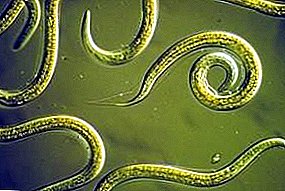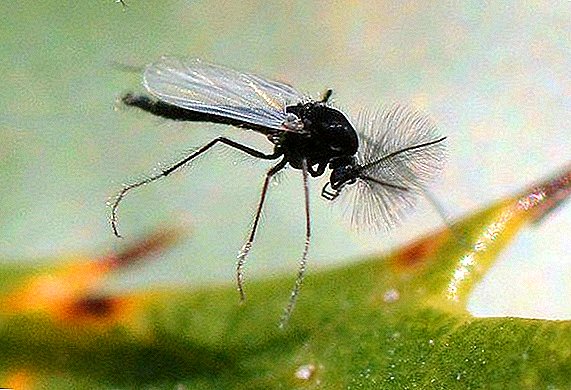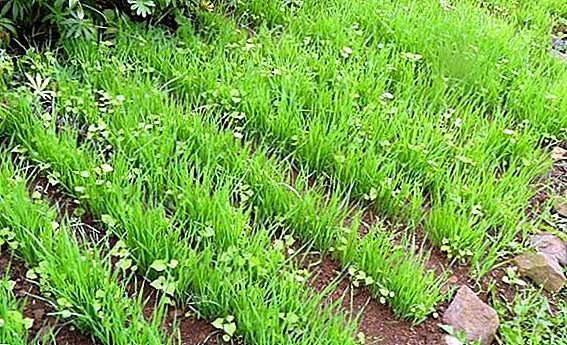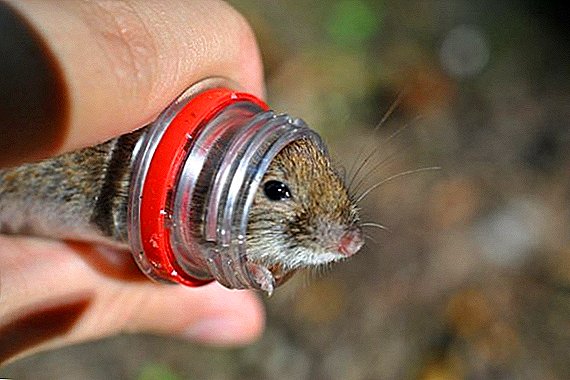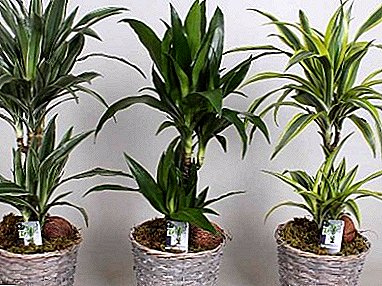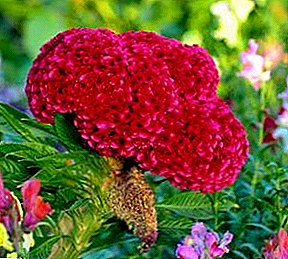
Drought-resistant, characterized by long flowering, unusual and spectacular beauty of celosia, more and more gaining flower growers.
Bright velvety inflorescences successfully fit into the most exquisite floral arrangements, decorating gardens, loggias and window sills.
And to grow this beautiful plant is not so difficult.
We need to know a few rules of planting, growing and caring for variegated and cheerful flowers, sung by the Japanese poet in the lines: "The grace of celesia, its dupe, chic ... Desperate fashionista, flowers of my soul!".
Also read about planting and caring hyacinth flowers.
Here, you can learn about the cultivation of terry aquilegia from seed.
Learn how to cut roses from a bouquet: //rusfermer.net/sad/tsvetochnyj-sad/vyrashhivanie-tsvetov/razmnozheniya-roz-cherenkami.html
Planting celosia
The plant is most often propagated by seeds - grafting leads to a loss of decorativeness. It is better to buy a mixture of seeds, then multi-colored celosia will bloom for a long time - throughout the summer and the warm part of autumn.
 Sow seeds for seedlings need to be heated in a greenhouse or loggia in late March or early April.
Sow seeds for seedlings need to be heated in a greenhouse or loggia in late March or early April.
The soil mix should be light. Either a combination of vermiculite and humus soil (1: 1) is suitable, or else a neutral, rather loose garden soil.
Seeds should be spread over its surface loosely, from above you need to sprinkle them with a thin layer of soil, pour very carefully, cover with a film with which you must constantly remove the condensate that forms.
Seedlings of celosia in the period of germination should be protected from direct sunlight.
Sprouts will start to appear on day 5-15. It depends on the quality of the seed. Best of all, they germinate at a temperature of 23-25 degrees, if it is lower, then the seeds will germinate unevenly and may not even get rid of the seed coat.
Celosia is a light-loving flower, its seedlings should be illuminated. And therefore in the greenhouse for this purpose either halogen lamps or sodium lamps are used, houses are luminescent.
If necessary, seedlings should be thinned, because the distance between them should be at least 1 cm, no less. Even if the seedlings are dimmed, they can be quickly drawn out, therefore the food area should be sufficient for them, otherwise the plant will die from the black leg.
To prevent this, celosia can be treated with phytosporin. Use a better liquid form of the agent, the dosage is indicated by the manufacturer.
It is not worth hurrying with picks of shoots. The first pick is best done when there are 2 true leaves. They hold it in five centimeter tapes, and only then the seedlings are rolled in seven centimeter tapes. After the seedlings take root after the 1st pick, they should be fed.
After the seedlings take root after the 1st pick, they should be fed.
Use for this purpose, nitrogen-phosphorus-potassium mineral fertilizer for flowers.
Top dressing of a plant is combined with watering. The second time the dressing is done after transshipment of seedlings. It is impossible to overfeed celosia, it will lead to the growth of leaves, which in turn will have a bad effect on flowering.
It should also be remembered that overmoistening and too dense soil mixture of celosia seedlings is very poorly tolerated, therefore vermiculite is added to it.
Celosia is planted in a permanent place when the threat of frost is completely bypassed.
Celosia loves heat and light and does not tolerate an overabundance of moisture. Therefore, for planting choose a sheltered from the wind and sunny place. If the soil is acidic, it is lime.
Fresh organic fertilizers are contraindicated for the flower, so it is better to make them under the previous plant. Low-growing specimens of celosia are planted at a distance of 15-20 cm from each other, tall ones - at a distance of 25-30 cm.
Plants bloom in late May - early June, and stop flowering in open ground when the temperature drops to 1 degree.
Orchid is a noble and beautiful flower. Learn about the proper watering of orchids.
Violets are the favorite flower of many housewives. Read what wick watering violets: //rusfermer.net/sad/tsvetochnyj-sad/vyrashhivanie-tsvetov/fitilnyj-metod-poliva-fialok.html
Growing up
Tseloziya loves feeding, so when transplanting it into open ground, the plant needs to be fed with complex fertilizers, combining this process with watering.
 This should be done no more than 2 times a month. If you overfeed celosia, it will have bulky foliage, not flowers, for the sake of which this plant is grown.
This should be done no more than 2 times a month. If you overfeed celosia, it will have bulky foliage, not flowers, for the sake of which this plant is grown.
The optimum temperature for celesia is 23–25 degrees, it tolerates temperatures below 10 degrees, but at the same time it grows poorly and blooms.
The acidity of the soil used to grow the plant must be neutral. Do not allow stagnant water. It is advisable to water the celesia early in the morning, in no case should this be done in the evening. Also for watering should not use warm water.
At home, the plant blooms for a long time, especially if the room is well ventilated and cool in it. In a strong heat tseloziyu better spray.
Flower care rules
 Plant care includes the constant loosening of the soil, periodic feeding, watering in dry weather. Celosia likes water, but it can not be poured.
Plant care includes the constant loosening of the soil, periodic feeding, watering in dry weather. Celosia likes water, but it can not be poured.
It should be remembered that this plant is better tolerate the lack of water than excess. Abundant watering is needed only during growth and when it is very hot.
But the soil still needs to be kept wet, otherwise the flowering will stop. Celosia does not like drafts and temperature drops.
Features of growing hydrangea and caring for it at their summer cottage.
Rules for growing lilies at home: //rusfermer.net/sad/tsvetochnyj-sad/vyrashhivanie-tsvetov/liliya-prekrasnyj-tsvetok-dlya-lyubogo-sada-kak-uhazhivat-za-liliej.html
Cellosia pests
Like any plant, these flowers are prone to disease.
The most common among them is the black leg. Identify the disease can be, noticing the blackening of the stem at the base. The causative agent of the disease can live in any soil mixture, so before planting it should be processed.
The black leg is a highly contagious disease - if the plant shows the first signs of a lesion, it should be immediately thrown away, the land should be treated to avoid contamination of other plants.
 Fungi violate sap flow in the flower, blocking blood vessels. As a result, the root system of the plant dries out, the leaves sag, celosia turns yellow and dies. The main cause of the disease is waterlogging.
Fungi violate sap flow in the flower, blocking blood vessels. As a result, the root system of the plant dries out, the leaves sag, celosia turns yellow and dies. The main cause of the disease is waterlogging.
Black leg can be caused by acidic or very dense soil. If celosia is grown at home, then insufficient ventilation or lack of it can lead to the disease.
Insects can carry infection. Soil or plant residues may be infected. To prevent the disease, you can soak the seeds in potassium permanganate, and pour the soil with boiling water, or with a solution of the same potassium permanganate.
On tselozii likes to settle aphid. To combat it should be sprayed plants inexide.
If chlorosis is found, another disease affecting celosia, you need to take iron supplements.
 But that's not all. After all, celosia can be used as a dried flower.
But that's not all. After all, celosia can be used as a dried flower.
To do this, cut off flowering tall plants, free them from foliage and collect in bunches.
They are dried in a dark room - the color of flowers fades in the light, which negatively affects their decorative effect.
In addition, the room must be dry and well ventilated.
If you follow these tips, then properly dried plant will be an expressive, bright note in any flower arrangement.


 Also read about planting and caring hyacinth flowers.
Also read about planting and caring hyacinth flowers. Orchid is a noble and beautiful flower. Learn about the proper watering of orchids.
Orchid is a noble and beautiful flower. Learn about the proper watering of orchids. Features of growing hydrangea and caring for it at their summer cottage.
Features of growing hydrangea and caring for it at their summer cottage.
